Utah’s Zion Canyon feels like nature’s cathedral, where towering red cliffs stretch toward the sky and the Virgin River carves through ancient sandstone. This isn’t just another national park – it’s a hiker’s paradise where every trail tells a different story.
From gentle riverside strolls to adrenaline-pumping scrambles along narrow ridges, Zion offers something for everyone willing to lace up their boots and explore. The canyon’s unique geography creates a playground of diverse hiking experiences.
You might start your morning walking through cool, shaded slot canyons where sunlight barely touches the ground, then spend your afternoon standing on windswept overlooks with views stretching for miles. Here is a list of 19 incredible hiking trails that showcase the very best of Zion Canyon’s natural beauty and adventure.
Pa’rus Trail
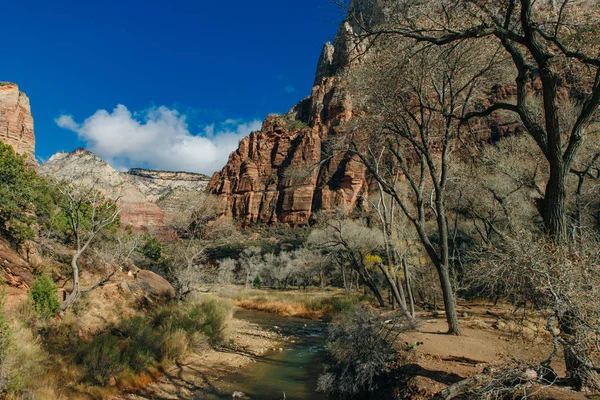
This paved trail serves as Zion’s most accessible adventure, perfect for families, cyclists, and anyone wanting to ease into the park’s magic. The trail spans 3.5 miles and is wheelchair accessible, open to dogs on-leash, and cyclists.
Starting near the visitor center, it follows the Virgin River through the heart of the canyon. The path crosses several picturesque bridges where you can stop and listen to the rushing water below.
Morning hours offer the best experience, with fewer crowds and soft light illuminating the canyon walls.
Riverside Walk
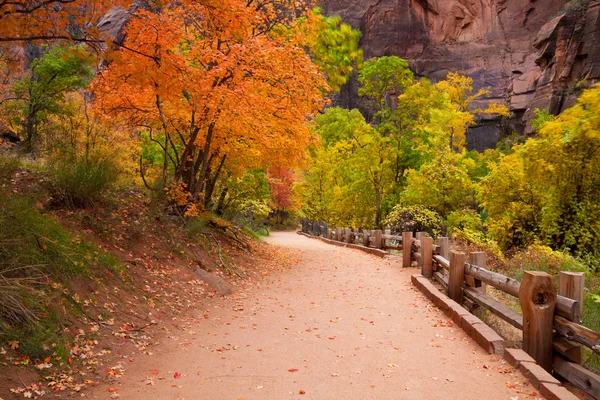
This short, paved stroll along the Virgin River extends 2.2 miles to the stunning mouth of Zion’s iconic slot canyon. The trail ends where The Narrows begins, making it a perfect warm-up for those planning the famous slot canyon adventure.
Towering walls rise on both sides as you walk, creating a natural amphitheater that echoes with the sound of flowing water. The paved surface makes this accessible to most visitors, though the gradual incline provides just enough challenge to feel like a real hike.
The paved trail winds along the Virgin River, leading to the start of The Narrows.
Like Travel Pug’s content? Follow us on MSN.
Canyon Overlook Trail
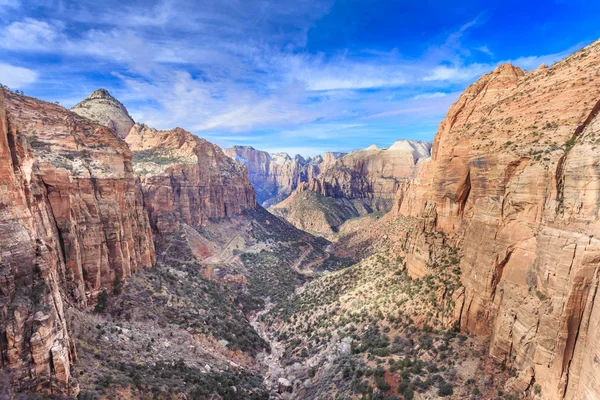
Located near the east entrance of the Zion-Mount Carmel Tunnel, this 1-mile roundtrip trail gains 163 feet of elevation and takes about 1 hour to complete. The trail shouldn’t be overlooked, offering beautiful, easy, and fun hiking that ends at Pipe Creek Canyon overlook, perched above the Great Arch with stunning views into Zion Canyon.
The path winds through shaded alcoves with ferns and crosses a planked boardwalk before emerging onto bare slickrock. You can see the expanse of Zion Canyon from the overlook, with the West Temple, Towers of the Virgins, Streaked Wall, and Beehives all making up part of this tremendous view. Parking fills up quickly, so arrive early.
Weeping Rock
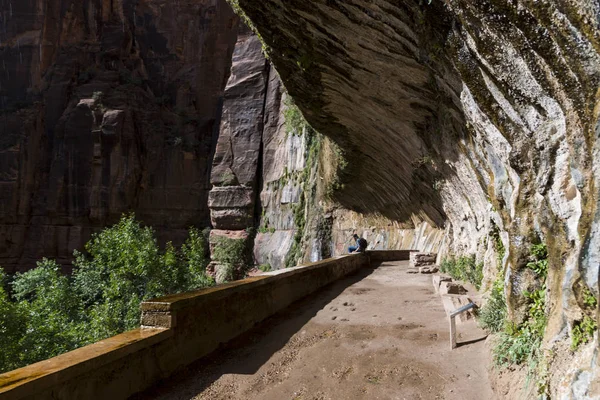
This short but steep paved trail gains 98 feet of elevation in 0.4 miles. The trail leads to a shady alcove where water oozes out of Navajo Sandstone, creating a natural weeping wall with lush hanging gardens. The water you see dripping has been filtering through the rock for over 1,000 years.
During rainstorms or periods of heavy runoff, the trickle turns into one of Zion Canyon’s most beautiful waterfalls. Though currently closed due to rockfall damage, this trail remains one of Zion’s most fascinating geological displays when accessible.
Lower Emerald Pool Trail
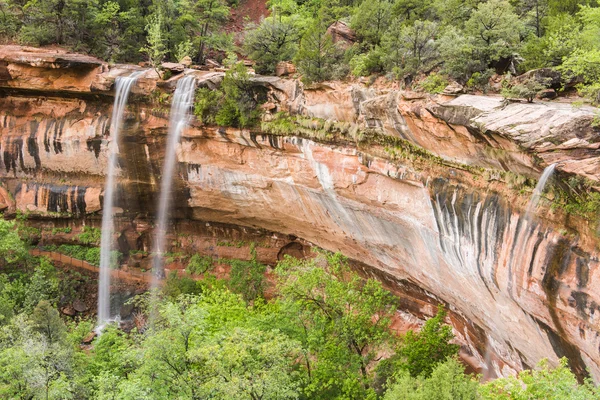
Starting from The Grotto via the Kayenta Trail, this 2.2-mile roundtrip hike gains 150 feet of elevation and takes about 1.5 hours. The trail leads to pools below the Middle and Upper Emerald Pools, offering a taste of Zion’s lush microenvironments. The views of Zion Canyon are stunning as you make your way toward the pools, though swimming is not allowed.
The path follows alongside sandstone cliffs where seasonal waterfalls create misty conditions that support unique plant life. This trail connects with other Emerald Pool routes, making it easy to extend your adventure.
Like Travel Pug’s content? Follow us on MSN.
Middle Emerald Pool Trail
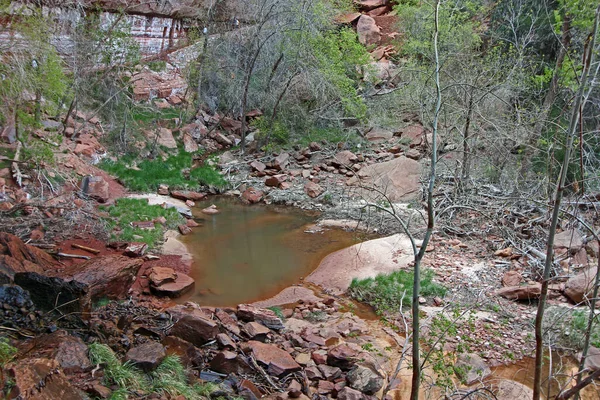
This 2.2-mile roundtrip trail accessed via the Kayenta Trail from The Grotto involves an unpaved climb to a sandstone ledge that parallels the lower trail at a higher level. The elevation gain matches the Lower Pool trail at 150 feet, but the perspective changes dramatically. You’ll walk along terraced sandstone formations that feel like nature’s staircase.
The trail features moderate drop-offs and connects to the other Emerald Pools trails. The middle pools often reflect the surrounding cliffs, creating perfect mirror images on calm days.
Upper Emerald Pool Trail
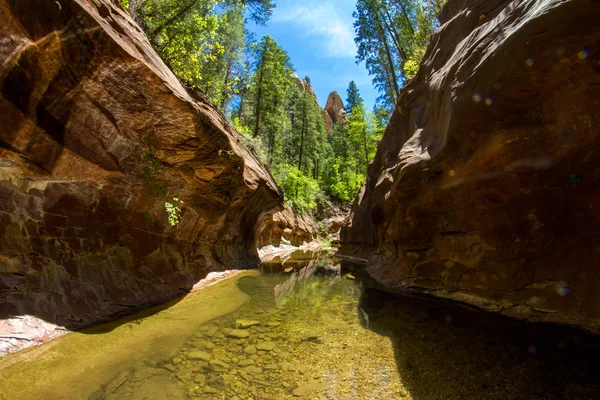
This 3.0-mile roundtrip hike from The Grotto gains 200 feet of elevation and takes about 2 hours to complete. The sandy and rocky trail climbs to the Upper Emerald Pool at the base of a cliff. This represents the most challenging of the Emerald Pool trio, with steeper terrain and more rugged conditions.
The upper pool sits in a natural amphitheater surrounded by towering walls. The final climb to Upper Emerald Pool is more challenging, but it leads you to a large pool surrounded on three sides by tall cliffs. The effort rewards you with solitude and dramatic views.
Kayenta Trail
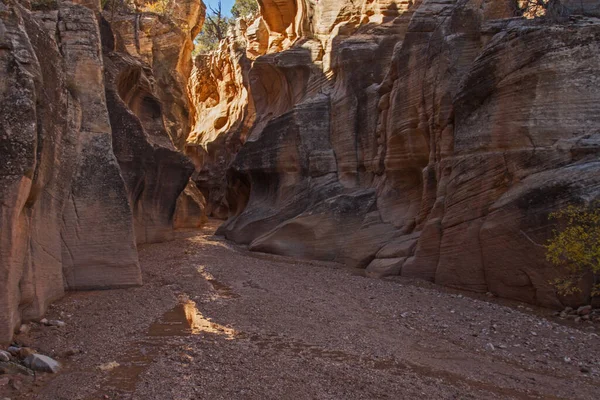
This 1.8-mile roundtrip connector trail starts across the street from The Grotto shuttle stop, crosses the footbridge, and climbs 150 feet to connect with the Emerald Pools trails. Think of it as the highway system for Zion’s pool network. The Kayenta Trail takes you alongside the Virgin River, with terrain that’s sandy and rocky, featuring long drop-offs and sandstone steps.
The trail offers constantly changing perspectives of the canyon walls and serves as an excellent alternative route when the main Emerald Pool access points get crowded.
Like Travel Pug’s content? Follow us on MSN.
Watchman Trail
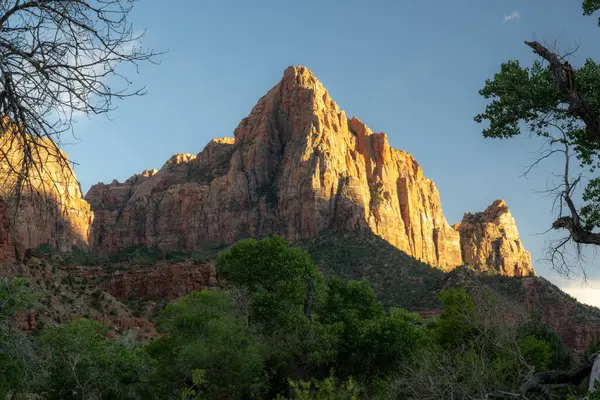
Starting from the Visitor Center area, this 2.8-mile roundtrip hike gains 368 feet of elevation and takes about 2 hours. The Watchman Trail is less trafficked than any other trail along the main part of Zion Canyon but offers stunning views of cascading canyons and desert plant life. The trail ends at a viewpoint of the Temples and Towers, lower Zion Canyon, Watchman Peak, and Springdale.
Morning light hits the Towers of the Virgin perfectly from this vantage point. The trail can get muddy when wet, but it provides one of the best crowd-free experiences in the main canyon area.
Sandbench Trail
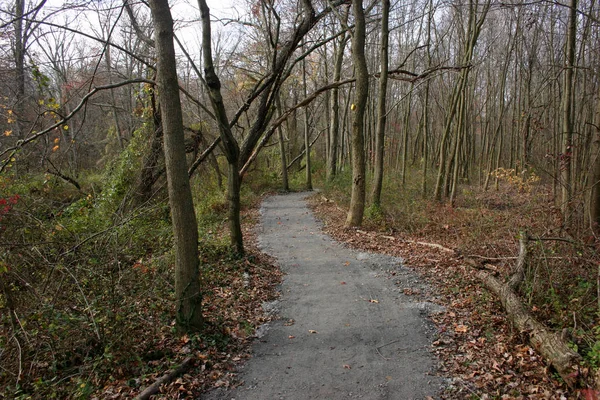
This 3.9-mile roundtrip trail starts from Court of the Patriarchs, gains 466 feet of elevation, and takes about 3 hours. The trail serves as a commercial horse trail from March to October and leads hikers atop a massive landslide under The Sentinel. Expect deep sand and little shade, making this more of an endurance test than a scenic stroll.
The geological story here is fascinating – you’re literally walking on top of an ancient rockslide. The trail features deep sand and little shade, with no water or restrooms available at Court of the Patriarchs.
Scout Lookout
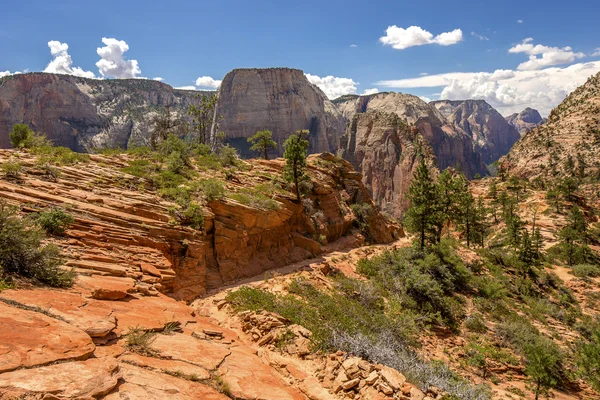
This popular paved trail leads up to Scout Lookout and despite the pavement, can be very steep and difficult in some sections. The trail serves as the approach to Angels Landing but makes an excellent destination on its own for those who want the Angels Landing experience without the final scramble or permit requirements.
Scout Lookout via the West Rim Trail covers 3.5 miles out-and-back and provides the best Angels Landing experience without needing a permit. The views from Scout Lookout rival those from Angels Landing itself, with sweeping panoramas of Zion Canyon spreading out below.
Like Travel Pug’s content? Follow us on MSN.
Angels Landing

This spectacular 5.4-mile roundtrip day hike and scramble to the summit of Angels Landing is suitable for well-conditioned hikers who have no fear of heights. The Angels Landing Trail is a technical route with steep drop-offs and very narrow sections, making it the most popular hike in Zion due to its incredible views of Zion Canyon.
Beginning April 1, 2022, Angels Landing requires a hiking permit. The final half-mile involves chains and narrow ridges with thousand-foot drop-offs on both sides. This isn’t just a hike – it’s a test of nerve and determination that rewards the brave with some of America’s most spectacular views.
The Narrows
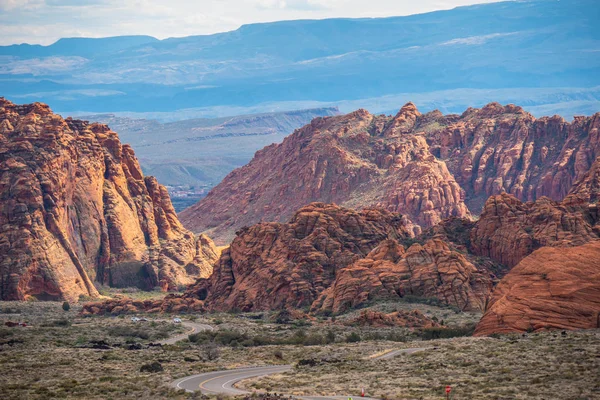
This 9.6-mile out-and-back day hike up the lower section of Zion Canyon Narrows features the North Fork Virgin River running beneath thousand-foot walls of Navajo sandstone. There is no established trail here, as for over half of the journey, you are walking in the Virgin River itself through a gorge where some areas are only 20 feet wide.
You’ll be walking between towering canyon walls alongside the beautiful Virgin River, though water levels vary, and continuing past certain points requires permits. River shoes and walking sticks are essential gear for navigating the slippery rocks and changing depths.
Hidden Canyon
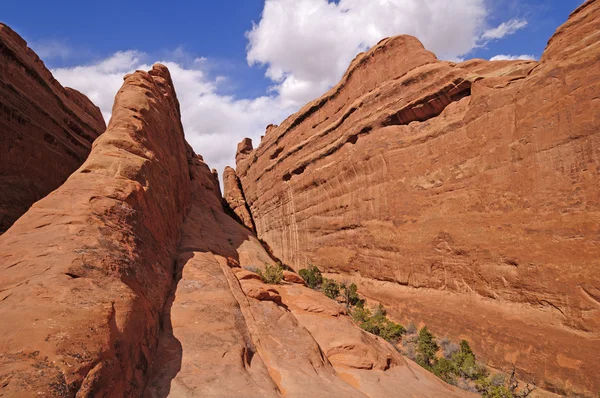
This impressive 2.2-mile roundtrip hike begins at the Weeping Rock Trailhead and takes 3-4 hours depending on how far you venture into the canyon. The trail is strenuous with numerous switchbacks on a narrow cliffside with exposure at high elevations, featuring chains for assistance in some sections.
Currently closed due to rockfall damage, this trail was renowned for its hanging canyon experience. The trail leads between sheer sandstone walls rising hundreds of feet, passing landmarks like Cable Mountain and the Great White Throne. When accessible, explorers can find small sandstone caves and a natural arch within the hidden alcove.
Like Travel Pug’s content? Follow us on MSN.
West Rim Trail
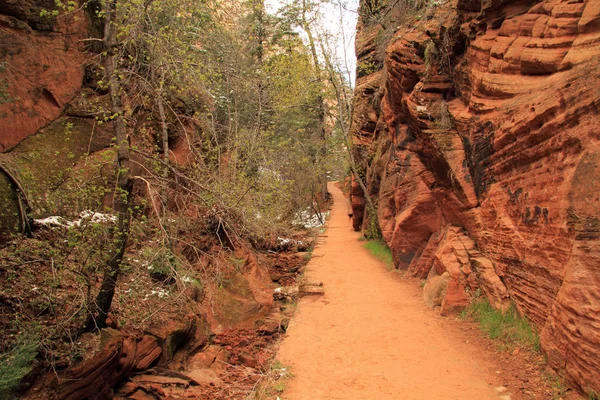
This long, fascinating, and dramatic walk starts near Lava Point and winds along the high plateau west of the main Zion canyon areas with superb views west across Wildcat Canyon. The trail drops on amazing dynamited paths across the cliffs and slickrock of the Zion canyon sides to Scout Lookout, then down endless switchbacks into narrow Refrigerator Canyon and down to the Zion canyon-bottom at The Grotto.
Starting from Lava Point or the West Rim Trailhead, this long and beautiful hike along Zion’s upper plateau ends with a dramatic descent through the magical sandstone formations of the White Cliffs. This represents Zion’s ultimate backpacking adventure, though day hikers can tackle sections.
East Rim Trail
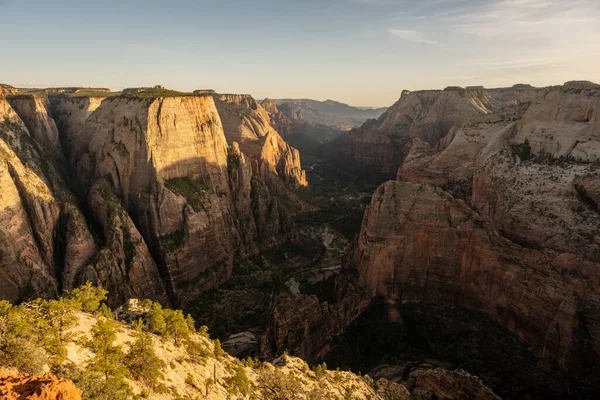
The East Rim Trail provides a fine walk-in to the heart of Zion from the east entrance to the park. This trail leads to the park’s highest point and offers an alternative approach to Observation Point via the East Mesa route. The Observation Point via East Mesa Trail covers 7 miles out-and-back and is best for avoiding crowds.
The high-elevation approach provides completely different perspectives of familiar landmarks, with sweeping views across the plateau country. The trail connects various high-country destinations and serves as a gateway to Zion’s backcountry.
The Subway (Left Fork North Creek)
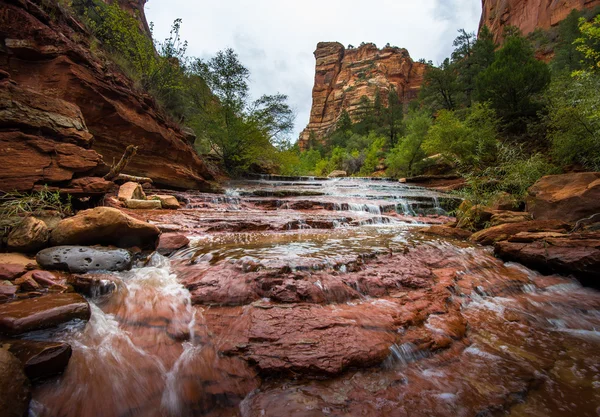
The Subway is a spectacular section of the Left Fork of North Creek that can be hiked from bottom-up as a strenuous route that gets to the best features without ropes and swimming. The top-down route is a classic canyoneering hike involving several short rappels, down-climbs, and cold swims through roughly 10 miles of rugged territory.
The highlight is the half-mile section known as The Subway with its famous tubular sandstone formations. This iconic slot canyon requires permits and represents Zion’s most sought-after backcountry experience. A backcountry permit is required, with lottery reservations distributed several months in advance.
Like Travel Pug’s content? Follow us on MSN.
Kolob Arch
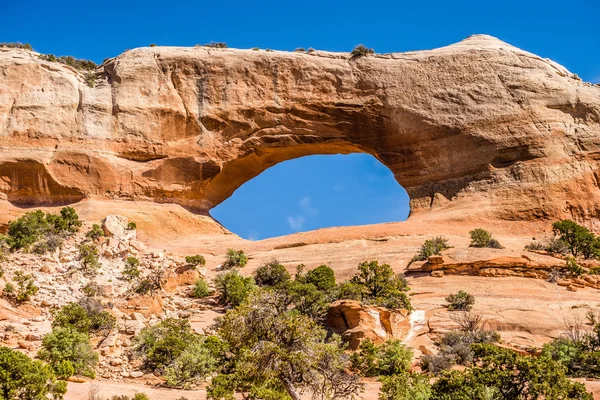
This 14-mile roundtrip hike in the Kolob Canyons section leads to Kolob Arch, one of the largest freestanding arches in the world. The trailhead for this hike to enormous Kolob Arch is accessible off I-15, 18 miles south of Cedar City.
The trail follows La Verkin Creek through a completely different landscape than the main canyon, with cooler temperatures and different vegetation. This represents a 22-kilometer there-and-back journey to the foot of the climb to see the huge arch. The arch itself spans nearly 300 feet, making it a true geological wonder that rewards the long approach with unforgettable views.
Northgate Peaks Trail
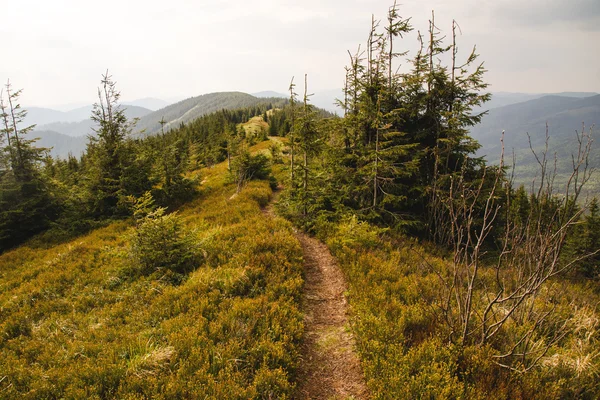
This family-friendly 4.2-mile roundtrip hike offers expansive views of Zion and makes for an excellent summer route due to its high elevation. The Northgate Peaks Trail provides a fairly easy hike in Zion’s high country to an interesting viewpoint in the Kolob Terrace section, offering a nice escape from the crowds of Zion Canyon.
You should make the 2-plus mile side-trip to the Northgate Peaks for exceptional southward views. The cooler mountain environment feels like a different world compared to the desert floor, with aspen groves and pine forests creating a refreshing change of pace from the typical red rock scenery.
Where Past Meets Present
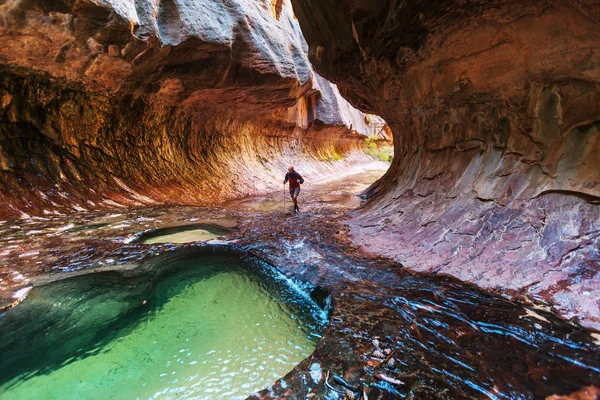
These 19 trails represent more than just hiking routes – they’re pathways through geological time itself. The same forces that carved these canyons millions of years ago continue shaping the landscape today, as evidenced by the ongoing rockfalls that periodically close trails like Weeping Rock and Hidden Canyon.
What makes Zion special isn’t just its accessibility or dramatic beauty, but how it demonstrates nature’s incredible patience and power. Every step you take follows paths that water has been carving for eons, creating the cathedral of stone that draws millions of visitors each year.
Whether you choose a gentle riverside walk or a challenging scramble to soaring viewpoints, you’re participating in an ancient conversation between human curiosity and natural wonder.
Like Travel Pug’s content? Follow us on MSN.
More from Travel Pug

- 20 Best Beach Towns in the Carolinas
- 13 Destinations Where Tourists Regularly Regret Their Trip
- 20 Things You Actually Get in First Class
- 20 Small Airports With Aviation Museums
- 20 Places in the U.S. That Are Perfect for a Reset Trip
Like Travel Pug’s content? Follow us on MSN.
